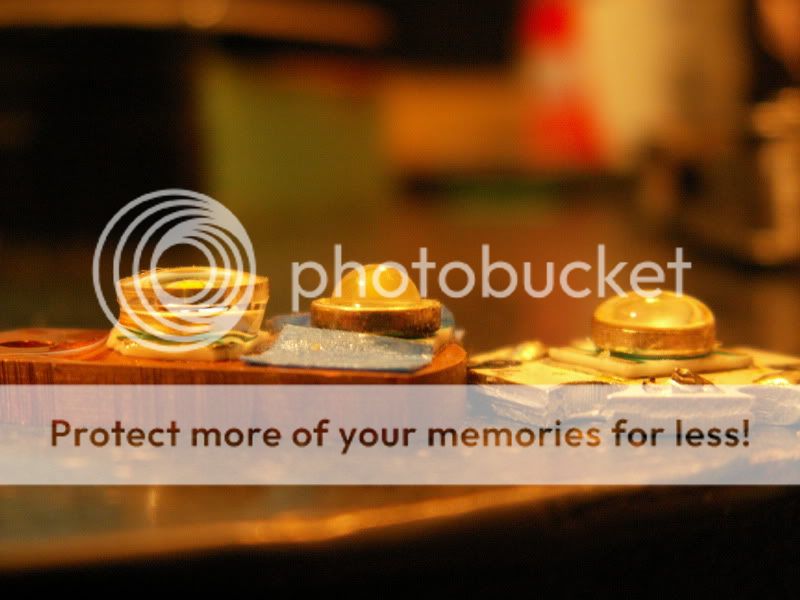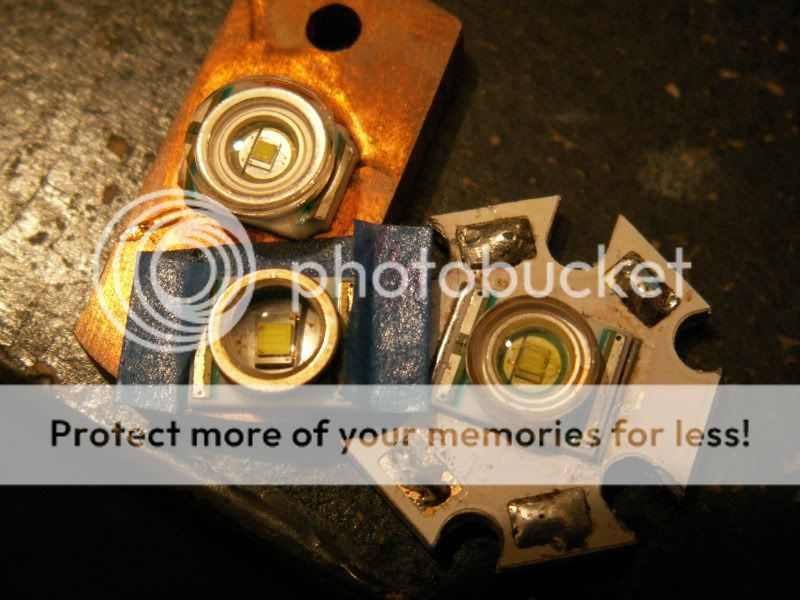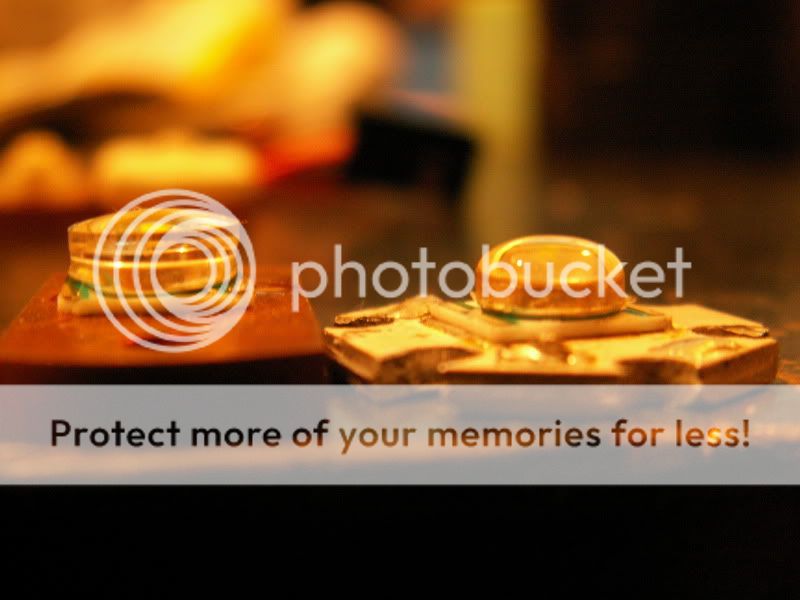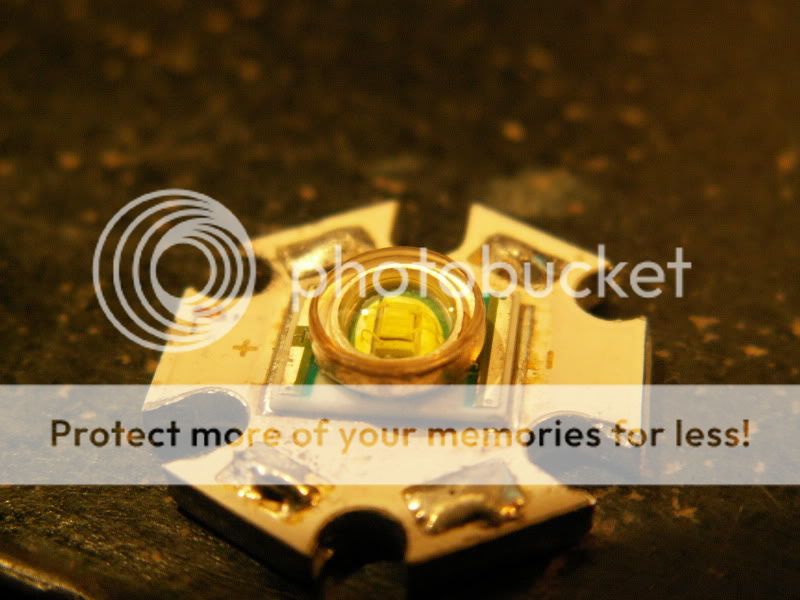Saabluster,
Nice work with encapsulating the XR-E emitters. I have been watching this in excitement to see what happens when a flashaholic has control over the emitter dome shape. BTW, how have these mods affected overall lumen output compared to before the mod? I personally lost domes off of two Rebel 0100 emitters and it seems like the phosphor was perfectly intact and the LED operational. The K2, and the Cree products still use bond wires that would be torn after removing the die. Hopefully, regardless of the emitter used, domes will not have to be removed in your experiments. Clean silicone domes of the XP-E, XP-G, and Rebel might disappear when you goop your silicone gel over top of it (so dome removal may be unnecessary).
As I mentioned in my last post lumens are down about 5-6% but it's hard to be sure since the spacial distribution is much different and I do not have an IS.
I think you may have misunderstood what I did here. I
did remove the dome and removed the gel that sits under the dome in its entirety. I took it all the way down to the phosphor impregnated silicone elastomer(note not the same thing as the gel) that Cree uses to coat the die with. Then I applied my silicone on top. Domes do have to be removed or it will not work. Also I have never had a Cree fail from pulling the dome off. The bond wires are fairly tough. I even picked at one to see how strong it was.
So, I was just wondering why the encapsulated XR-E (dome removed) with the acrylic lens did better than the one without. Is it an issue with different indexes of refraction? Is it because the acrylic lens has a smoother surface?
As I said I don't know what the condition of that LED(silicone only) was prior to the test. It was just sitting in the drawer missing a dome so I used it. This was just a preliminary test to see what would happen to the shape of the beam and get an idea if my ideas for encapsulation would work. There could be issues with index matching to the atmosphere and there may not be. I will not know until I can try it again with a know good LED. The one with the acrylic was known to be good.
You may have stumbled on something good for aspheric lens users, but I think before you should start selling these in large quantities, you should do more testing. I think that members would love to see comparisons between 3-4 new XR-E emitters from the same batch. Who knows, maybe your modded emitter without the lens degraded some, and if in better shape, could have perform the best. Having new emitters that perform the same from the start will help produce more conclusive tests in a more scientific fashion. (I understand the preliminary experiments with spare XR-Es). BTW, does the Deft use a high quality current regulator so even big changes in LED forward voltage will not affect output? I was just wondering.
As I said before more testing is definitely in order. This is also not just good for aspherics as the beam was significantly better for a reflector I used with it. The DEFT's output can change based on Vf and I know that so I will find a more accurate means of testing on the next round. This was just a proof of concept.
Between the two modified XR-E emitters, I guess I do not understand why they are so different. Why not remove the ring and then re-encapsulate the emitter? Why not re-encapsulate a Rebel, XP-E or XP-G? I see that the consistency of the optical grade silicone gel causes your "dome" to sag before it cures, but why not let gravity aid you? I do not know its viscosity or its values for surface tension, but maybe when held upside down, a dome might form a geometric shape in your favor (parabolic, spherical, elliptical, or catenary). If you are going for flatness, then why not temporarily fix it to the center flat spot of an old brushless PC cooling fan and let centripetal forces level off the top of the dome some? If the viscosity is high enough and you make the fan spin slow enough, you may get a very flat surface. As you spin it faster it may begin forming a parabolic dip in the center (like what happens with those experimental spinning mercury mirrors). You have a lot of control over the shape of this dome; that is awesome.
I want the ring there because it performs a function. It holds the lens away from the die and makes sure that it is straight and level. Ideally I'd like it even higher than it is now. That will be in some future tests.
I can create any shape that I want with this stuff. What I had was what I wanted to have. There is no need to spin it to get a flat surface as you can just use less of the encapsulant and surface tension will draw it tight if you have the right amount. That is not what I am after however.
If that acrylic lens is the ultimate solution, then why not take an old Cree XR-E metal ring (or a spacer with the same height) and fix it above a Rebel, XP-E, or even XP-G then fix on the acrylic lens? Maybe a modded XP-G would produce a projected beam (in the Deft) of the same size as an un-modded XR-E from your existing setup (I am being hopeful here).
The reason I am not even considering
any of those LEDs is because they have neither the surface brightness nor the ability to over-drive that the XR-E does. Keep in mind I am always searching for a way to improve throw and this is the fundamental starting point for that.
I am just asking that you try different setups with other emitters. We all bow to you since you have the optical grade silicone gel and experience. I like the XR-E, but have always been doubtful to the metal ring from the optical standpoint (I understand the mechanical purposes). If you can make a new dome over the tiny Rebel, XP-E, and XP-G, you might be able to shape the dome to do the same thing that the glass dome on the XR-E did, or you may be able to shrink down the apparent die size (flatten the dome) without sacrificing the total lumen output.
I may try a different emitter some time in the future but for now I am going to stick with the XR-E.
I always found the tint shift interesting. I also worry that the tint shift, while being pleasant to the eyes, may be bad for efficiency or overall longevity. It seems like a major change happens when the tint shift occurs, and it could be a bad change. Does it mean that more blue light is internally reflected back to the phosphor coating to produce reds
(due to the change in index of refraction), or does it maybe affect how heat is removed from the top of the light which affects the efficiency of the phosphors?
I
highly doubt there are any ill side effects from the tint shift. I am not losing much in total output at all so there cannot be any real effect of heating up the die or phosphor. Any extra heat at the die level created by my encapsulation method would at worst be like dropping a bin in LED efficiency. I don't see Q5s failing because they are less efficient and create more heat than R2s so I'm not worried.

It is strange that it shifted more red as whenever I have removed domes from XR-Es in the past(and not re-encapsulated) they turn a **** yellow/green. This is a nice change. It remains to be seen if this happens consistently though. I am sufficiently amazed though as it nows appears as if it is a proper neutral white color. Maybe in 3A territory.
You could theoretically can cut rebel emitters down (the ceramic substrate) without affecting the etched traces to position the four dies tightly together so they almost touch (electrically, they could touch if you plan on wiring the dies in parallel). Just re-encapsulate them (or not if you cut cleanly) and this could equate into a quad TFFC die emitter. Its not a practical mod (with the MC-E, P7, and SST-50 out there), but I dream that it could be done.
Cheers,
-Tony
That reminds me of another idea I had and still want to try out. The rebels would be ideal for it as well. My idea is to take 5 dies and position them so as to form a box. One would be flat as a normal LED. The other 4 are raised up to form the sides of the box with the top open for light to escape. The idea is that the four LEDs will help add some surface brightness to the base one which is the one the lens would be primarily focused on. You should be able to use an efficient cool white LED and have the resulting tint output to be warmer than it would otherwise. The increase in brightness would be minimal I'm sure but I am looking for any way to get ahead.

It is just an idea I have had in my head and I have not had a chance to test it out as yet.












